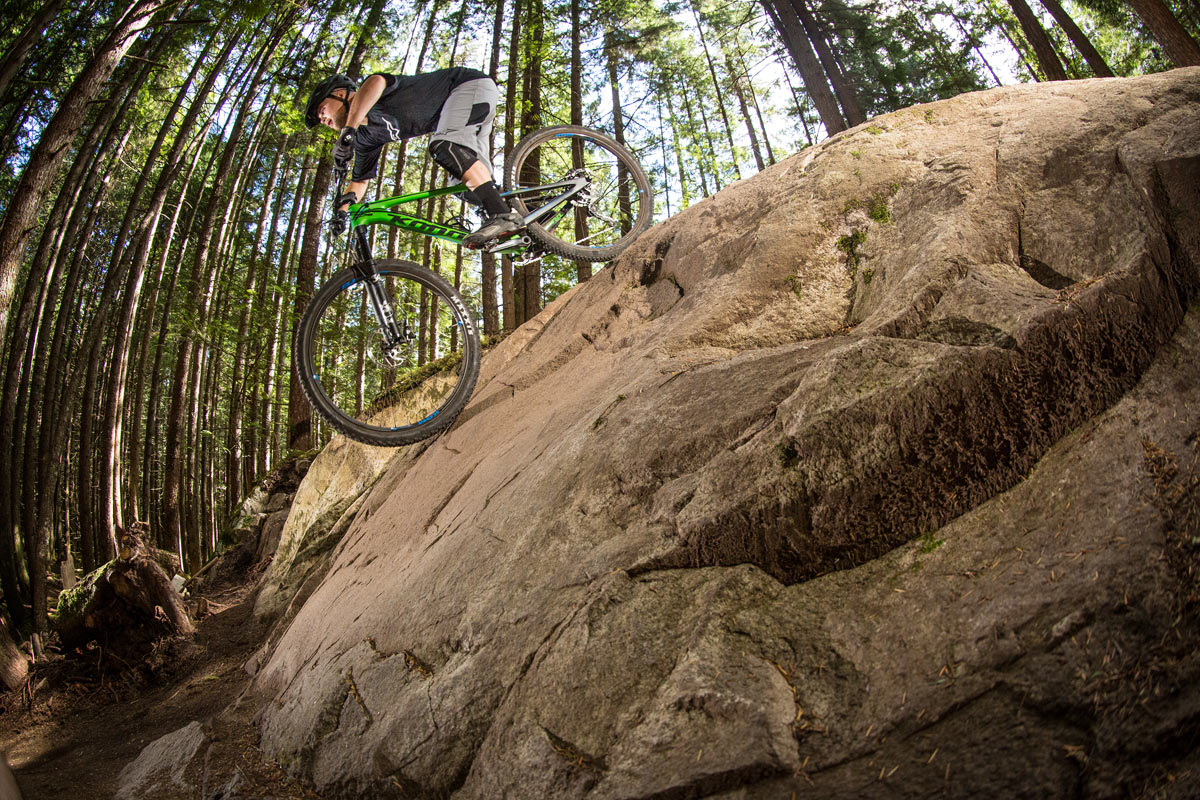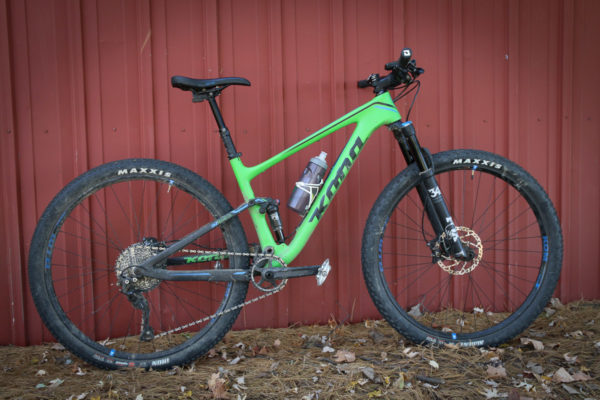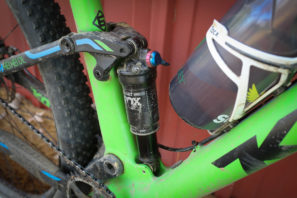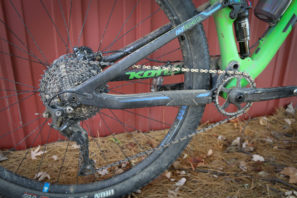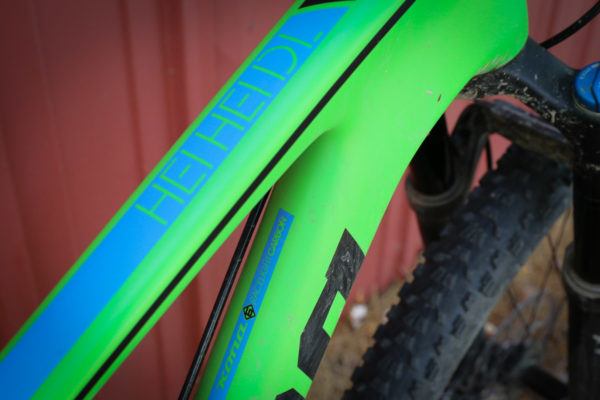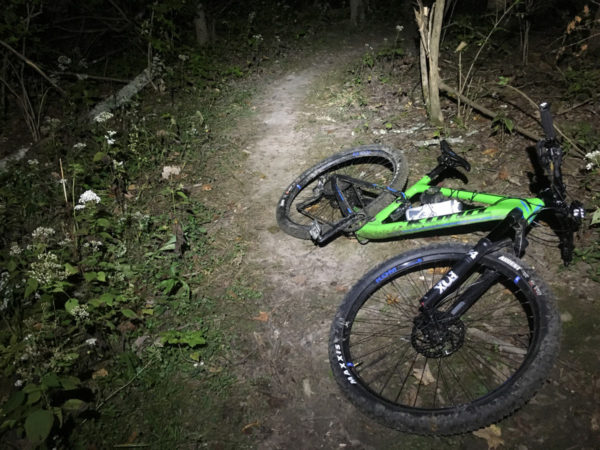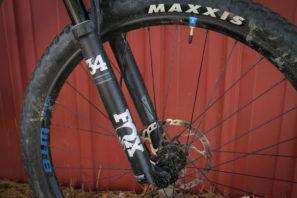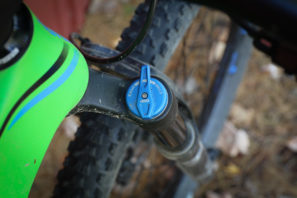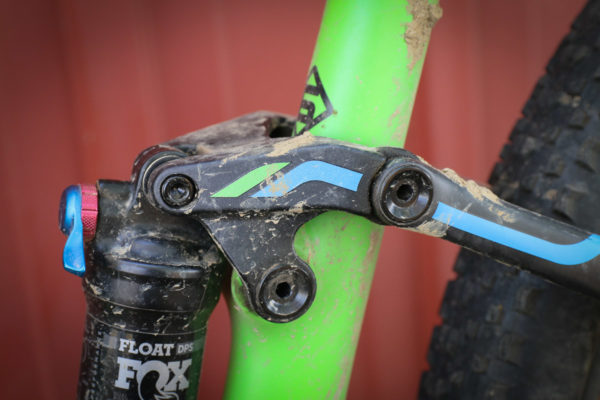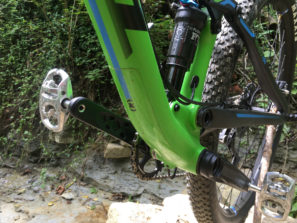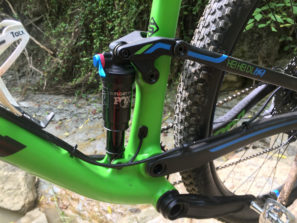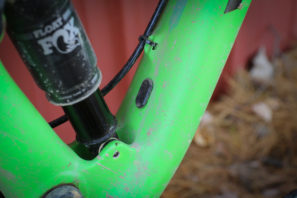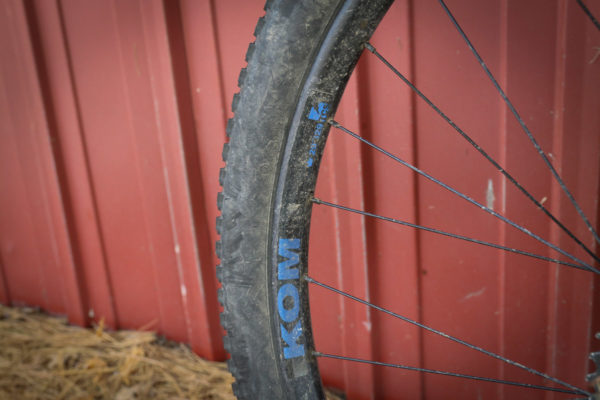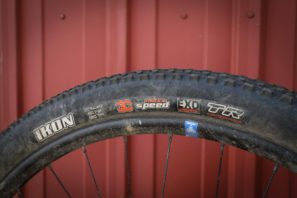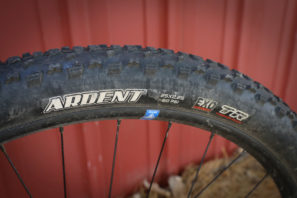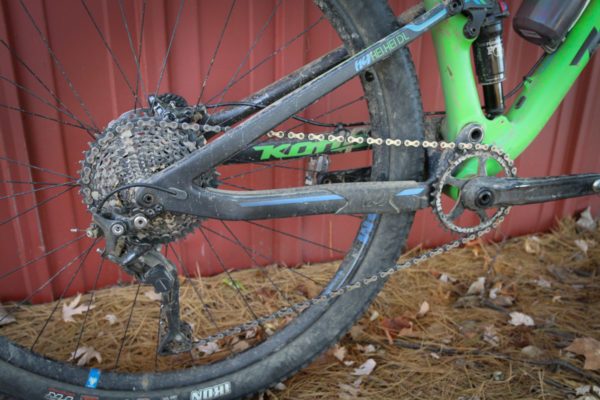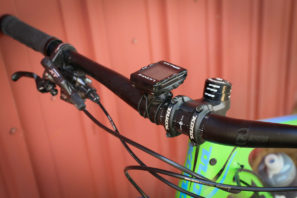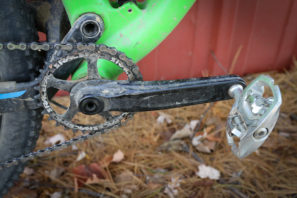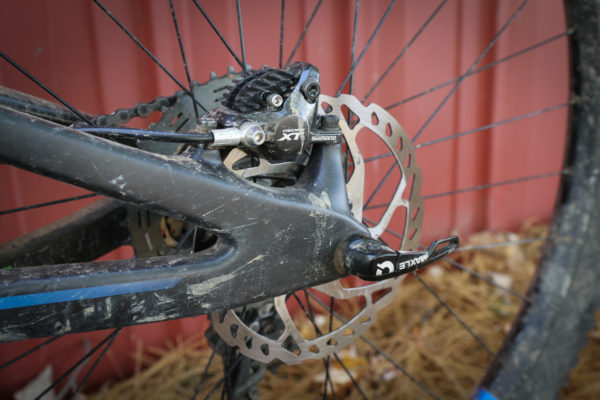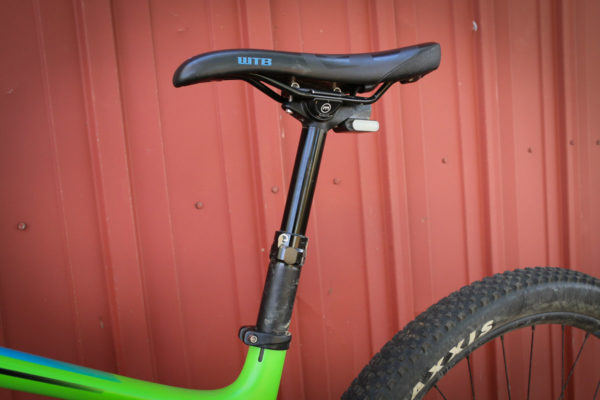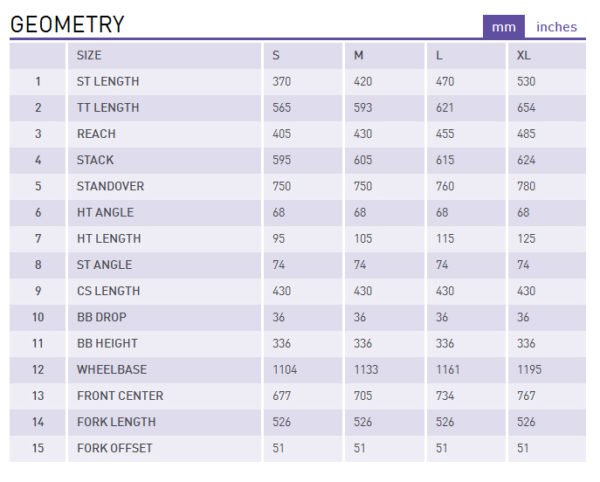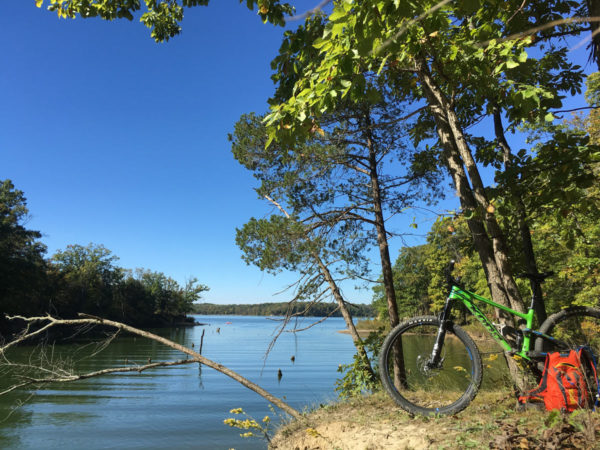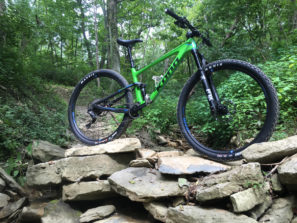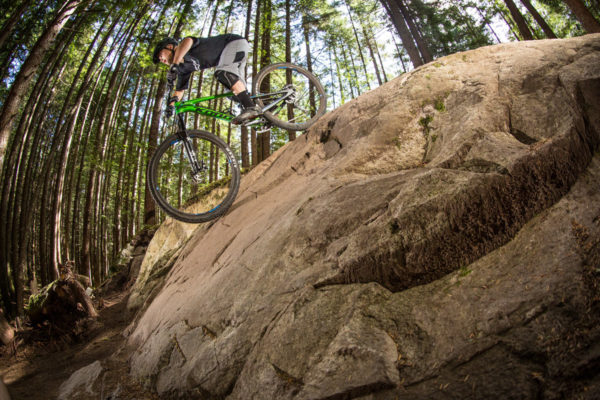
For a number of years now, Kona has categorized their Hei Hei 29er as an XC or XC Race platform. It still falls under that category, though they’ve added XC Trail and MTB Trail to the naming structure. But that doesn’t really tell the whole story. Going back to 2012, the Hei Hei has been mostly about 29″ wheels and going fast. As we’ve seen with many other manufacturers though, the concept of what XC actually is has been changing fairly rapidly. Slacker angles, slightly more travel, droppers, and wider bars are transforming disciplined race rigs into more enjoyable trail slaying machines that are still super efficient.
In 2017, Kona introduced the new Hei Hei Trail platform which adds a 27.5″ wheel option to the category, but they also increased the number of 29″ models. With five different 29″ models to choose from, small tweaks in spec will help change your mindset from ‘podium’ to ‘play,’ but there’s nothing slow about the new Hei Hei DL 29er…
On paper this may just look like a carbon version of the 2016 Hei Hei DL Trail, but the sum of its parts equals an entirely new ride. Starting with the Kona Race Light Carbon frame, the Hei Hei keeps the Fuse rear suspension which squeezes out 100mm of travel from a system that relies on a flexible seat stay. This keeps the number of pivots and weight to a minimum, and actually works pretty well out on the trail. Race bike efficient, the suspension still performs admirably over rough sections. As an added bonus, the frame has a ton of room in the front triangle which allows not just a large bottle, but a battery pack for a night light as well.
Most surprising though? How well the bike jumps. Between some combination of the geometry, the pop provided by the rear suspension, or the rest of the components, I was sending jumps just as well on this thing as bikes with more travel and smaller wheels.
Even though it’s just their Performance line, the new Fox suspension works incredibly well – especially the fork with the new Grip damper. Really, the fork is the difference maker for this build since it bumps the travel from 100mm for the Hei Hei Race to 120mm for the Hei Hei DL, and the addition of the 34mm chassis make for an incredibly planted front end. Truthfully, I like the black stanchion look better than Kashima, and I don’t think I could tell a difference in performance between the two. The rear shock performed equally well without any issues and the Open/Medium/Firm lever settings and rebound control keep the adjustment simple. The frame does have provisions for remote lockouts if you were so inclined.
After riding this bike hard for a few months, the only maintenance issue that popped up came in the form of a loose pivot bolt where the rocker link attaches to the frame. Fortunately, a bit of play was noticeable way before the bolt could back out completely and fall out, so keep an eye on this during the first few months of riding. If you want to check the torque of this pivot bolt (the lower one in the shot above), Kona tells us the correct torque value is 27Nm.
To keep the frame protected, there is a clear downtube protector installed along with a molded rubber chainstay protector. Cable routing is a mix of internal and external with fully external brake routing and internal rear derailleur cable routing (1x only). There are also ports for internal droppers for easy routing, as well as additional ports and guides for remote lock out shocks.
To put the power down to the trail, the DL is fitted with a Maxxis Ardent/Ikon (2.25/2.20) EXO tire combo on WTB i29 KOM rims built to Joytech Boost spacing hubs (148×12, 110×15). The 29mm inner width of the KOMs is a huge improvement over the 2016 Hei Hei DL which came stock with Stan’s Rapid 25 which had a 21mm inner width. The tires might be a little XC for some riders, but the fork could easily run a 29 x 2.4″ and the frame will at least clear a 29 x 2.25″ Ardent with plenty of room for mud clearance. For about 75% of my rides the tire combo was excellent, with the remaining 25% in conditions that were too loose or too wet for the Ikon to properly hook up. For a stock set of tires, this seems pretty good. Also, everything was tubeless ready right out the box which meant a bit of sealant and I was out riding. Perfect.
I have zero complaints when it comes to the drivetrain and brake spec for the DL. A Shimano XT 1×11 drivetrain with an 11-42t cassette, KMC X11 chain, RaceFace Aeffect Cinch crank with a 32t narrow-wide ring, and Shimano XT brakes with SLX rotors. All solid choices that worked flawlessly.
The cockpit setup isn’t anything fancy with Kona’s house brand XC/BC 35(mm) bar and stem, but they work and are super comfy. My medium test bike came with 750mm bars and a 65mm stem which seems to work really well with the geometry and maintains long XC ride comfort with warp speed control.
Pedals aren’t included with the bike so I used a set of iSSi Trail pedals that I’ve been smashing on for awhile now. Everything about these is good with the exception of Shimano SPD cleat compatibility. I’ve had a few issues where under full power the Shimano cleats would pop out of the pedals, but that’s understandable since we’re talking about another company’s cleat compatibility. When used with the iSSi cleats, the pedals have a solid hold and offer a quality alternative to SPDs with a decent platform and weight.
The Hei Hei DL does not come with the Magura Vyron dropper seatpost shown above, but it was swapped in after the stock KS LEV Integra suffered a temporary setback. It’s not clear whether it wasn’t tightened enough or if the cable broke, but somehow the actuation cable for the LEV pulled out of the clamp on the barrel nut which holds it in place at the bottom of the seat post. The post was in the bike when it came out of the box, so admittedly I didn’t remove it to check the torque on the nut. Inevitably, this happened right as I was headed out the door for a ride and I had two options – ride without a dropper for the ride, or pull the LEV and replace it with the Magura. I’ll have a dropper seat post round up soon that will go into details on the performance of the Vyron, but one of its greatest attributes is how easily and quickly it can be installed since you don’t have to deal with cables or hoses. Long story short, check the torque on the barrel nut so that you don’t lose dropper post function halfway through a ride.
Compared to the 2016 Hei Hei DL, the 2017 version in carbon has a few small changes in geometry that should be welcomed. The reach is longer across the board by roughly 10mm with a slight increase in wheel base but keeping the same 68/74° HTA/STA.
The result is one of the most fun XC/Trail short travel bikes I’ve been on in a long time. I still find myself gravitating to the smaller 27.5″ wheels, but the Hei Hei DL is proof that the bigger wheels can be just as fun when in the right frame. I wish our trails called for bigger bikes, but realistically, this is the perfect package for the majority of them locally. However, the silver lining comes in the fact that just because the bike is only 100/120mm travel, that doesn’t mean you have to give up on the fun, playful natures of the bike. There are so many bikes that either excel at the up or the down, but the Hei Hei DL finds balance between the two. It’s still a bike that you could easily use to compete in local XC races, but this is the bike you want for the rest of the year when it’s all about fun.
To me, this bike highlights Kona’s strengths and North Shore influence in a nutshell. It’s a good looking bike that is smartly equipped at $4699. The design is kept fairly simple, but in a way that still outperforms many similar bikes. With the exception of the small hiccup with a loose bolt, the frame seems like it will be stoutly durable in the long run. And right out of the box, the complete bike comes in at 26 lbs (11.79kg) with sealant in the tires. I was a fan of the aluminum Hei Hei DL I rode from 2016, but the 2017 version in carbon is a completely different beast. Without trying to be too many things, the Hei Hei DL ends up as the perfect blend of efficiency and enjoyment that defies categorization.
